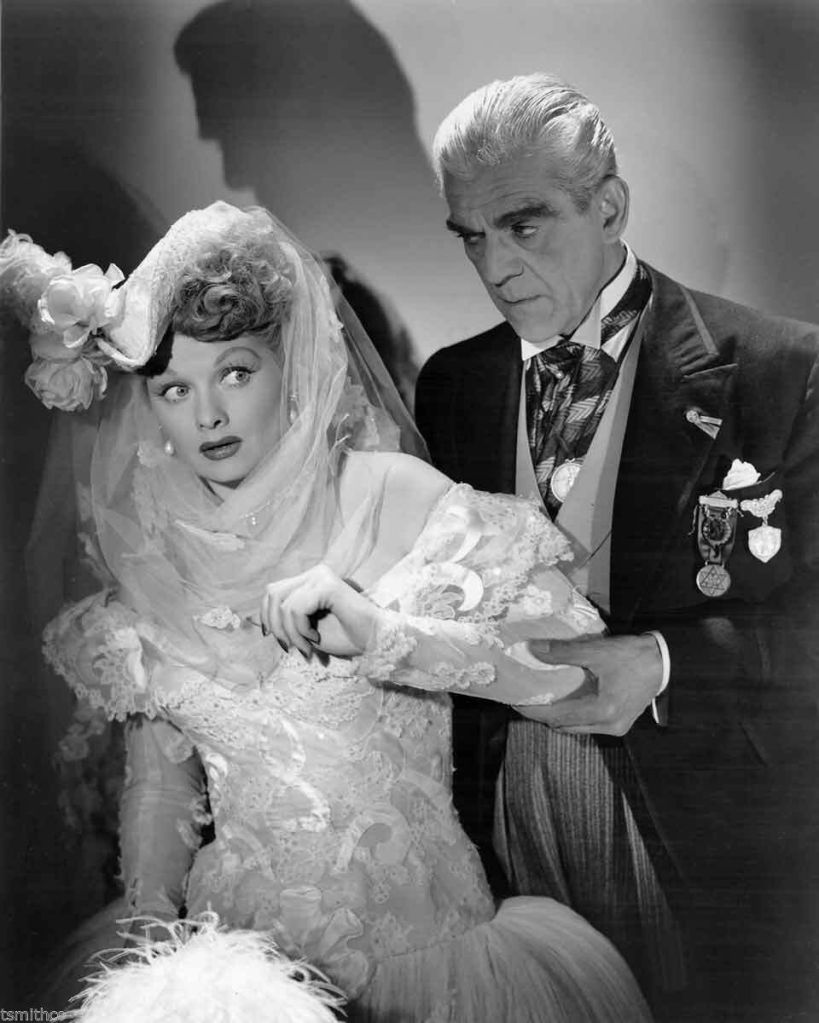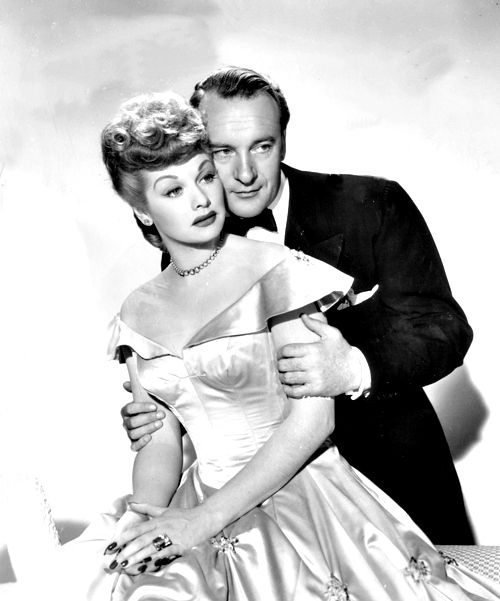Nineteen forty six was a most impressive year for theater attendance. It is no wonder then that 1947 served such memorable fare at the movies with enduring classics resulting. Counted among the gems released that year are The Ghost and Mrs. Muir, Gentleman’s Agreement, Life With Father, Miracle on 34th Street, The Bishop’s Wife and The Bachelor and the Bobby-Soxer. The year’s film noir outings included genre’s staples like Jacques Tourneur’s Out of the Past, Edward Dmytryk’s Crossfire, Delmer Daves’ Dark Passage and Jules Dassin’s Brute Force. That list alone impresses and the noted films likely to make a classic film fan out of the most casual filmgoer. Still, none of those offered the enticing combination of Lured also released that year. That is, the style of director Douglas Sirk, a first-rate cad in George Sanders and the future queen of comedy, Lucille Ball.

Born in Hamburg in 1900, Douglas Sirk immigrated to the United States in 1937. After a successful career as a stage producer and director, Sirk switched to movies in 1934. His first American movie was Hitler’s Madman (1943), a war effort outing made several years after he signed with Warner Bros. Sirk’s expertise, however, is the lush, emotional, Technicolor melodramas he made in the 1950s at Universal-International Pictures. These include Magnificent Obsession (1954), All That Heaven Allows (1956), Written on the Wind (1957), and Imitation of Life (1959). Sadly, Douglas Sirk’s work from the 1940s is barely mentioned in discussions of his career, which is a shame because among those are the elegant A Scandal in Paris (1946), in which a dashing George Sanders gives one of his best performances as a criminal who becomes Prefict of Police, and the wonderfully atmospheric Lured.
Loosely based on Pièges, a movie Robert Siodmak made in France in 1939, Lured was originally entitled Personal Column, which is also quite similar to Siodmak’s Phantom Lady from 1944 starring Franchot Tone and Ella Raines. Personal Column was the first production of Oakmont Pictures, a company formed in 1945 by distributor James Nasser and producer Henry Kesler. Personal Column struggled to get to the screen for several reasons not the least of which was the Breen office’s rejection of the original script due to content concerns. With production stalled, Nasser lost his intended leading female star, Joan Leslie, who was eager to move on from playing ingénues in several pictures. Perhaps because he thought Personal Property not worth the time and effort, Nasser sold the story to veteran independent producer Hunt Stromberg, previously an influential producer at Metro-Goldwyn-Mayer. Stromberg immediately hired Douglas Sirk and George Sanders. Sirk and Sanders had already made two films together, Summer Storm (1944) and A Scandal in Paris.
Once he got the green light to shoot Personal Column, Hunt Stromberg put his energy in enlisting a distinguished cast of veteran actors. The sparkling Charles Coburn, who was at the height of his career in the mid-1940s, plays Scotland Yard Inspector Harley Temple. Cedric Hardwicke plays Julian Wilde, business partner and friend to theatrical producer, Robert Fleming (Sanders). In an interview he gave upon the release of Personal Column, Hardwicke had this to say about his performance, “Throughout the picture I am cultured, sophisticated and polite. I am a gentleman and a scholar to all appearances. But all the time I’m a heel and I know it, and at the end, the audience knows it too!” In other words, audiences got the Hardwicke they paid for.
Perennial bad guy Joseph Calleia plays the mysterious Mr. Moryani, a sinister man who lures young women to South America under false pretenses with the help of Lyle Maxwell (Alan Mowbray). George Zucco plays Scotland Yard Officer Barrett who serves as a bodyguard to Sandra Carpenter. Zucco plays the rare non-villain role effectively. Supporters Alan Napier and Robert Coote are seen working at Scotland Yard. Horror legend Boris Karloff makes an appearance as a crazed couturier who goes mad when his most famous design is stolen. He places an ad for a model and Sandra Carpenter shows up to meet the strange character with macabre tendencies. Karloff’s role here is small, but the popularity of his name is enough to give him credit above the title. Tanis Chandler plays the eighth victim of the poet murderer and Sandra’s best friend. Word in magazines at the time was that Personal Column offered the big break Chandler craved in Hollywood, but it did not.

Last to be signed for Personal Column was Lucille Ball who had just finished another film noir, Henry Hathaway’s The Dark Corner opposite Clifton Webb. While her character in Hathaway’s picture is not far from her Sandra Carpenter character in Personal Column, Ms. Ball takes full advantage of her surroundings and delivers a wonderfully energetic performance. Ball is so effective in the role, in fact, that she manages to soften the trademark George Sanders cynicism without diminishing the power of his purrs. Traces of Lucille Ball’s comedic talent are evident throughout the picture, but do not detract from the menace. It does not hurt any that she looks stunning in the picture just as George Sanders’ usual flare for the dramatic is evident in his impressive form.
Personal Column tells the story of a serial killer who lures women by placing ads in the personal columns of the daily newspaper. Sandra Carpenter’s best friend Lucy Barnard disappears after answering one of the ads. Both women are taxi dancers at a London dance hall and Lucy’s disappearance leads Sandra to Scotland Yard and Inspector Temple who charges her with acting as bait in hopes of catching the serial murderer. Sandra’s task is simple, but dangerous, answering every suspicious ad she comes across. The prospect introduces Sandra to adventures and characters she likely would have never met in a dance hall and that includes the dashingly rich Robert Fleming who enjoys beautiful women as a hobby. Sandra manages to tame Robert, however, and the two fall madly in love. Unfortunately, just as they celebrate their engagement Robert becomes one of the primary suspects in the personal column killings. True to her nature, Sandra goes to great lengths to try to clear Fleming’s name by trying to trap the real killer herself. In the end, thanks to Sandra Carpenter’s instincts, Scotland Yard gets its man. So does Sandra.
By the time shooting on Personal Column wrapped, Hunt Stromberg was no longer happy with the film’s title. The story goes that he placed ads in personal columns is many newspapers across the country asking for new title ideas. The winner was Lured.
As much as the mystery in Lured keeps the viewer interested, it is not what makes this a worthy picture of 1947. The combination of director and stars does the trick in addition to its brilliant black-and-white photography by William Daniels. Add Nicolai Remisoff’s memorable art direction and production design to the mix and the result is a beautifully stylized thriller with outstanding stars given particular attention and guidance by a master. Perhaps the biggest surprise of all in the picture is the unexpected chemistry between George Sanders and Lucille Ball who add substantial romantic flair to the proceedings. Beware. They will lure you.
_____________
This entry was originally published in the December 2020 issue of The Dark Pages. Edited by author Karen Burroughs Hannsberry, The Dark Pages is a must-have bi-monthly newsletter dedicated to all things Film Noir. For more information, visit The Dark Pages subscription page.



A very nice and memorable share!
Must watch it again.Good cast.
Love this movie